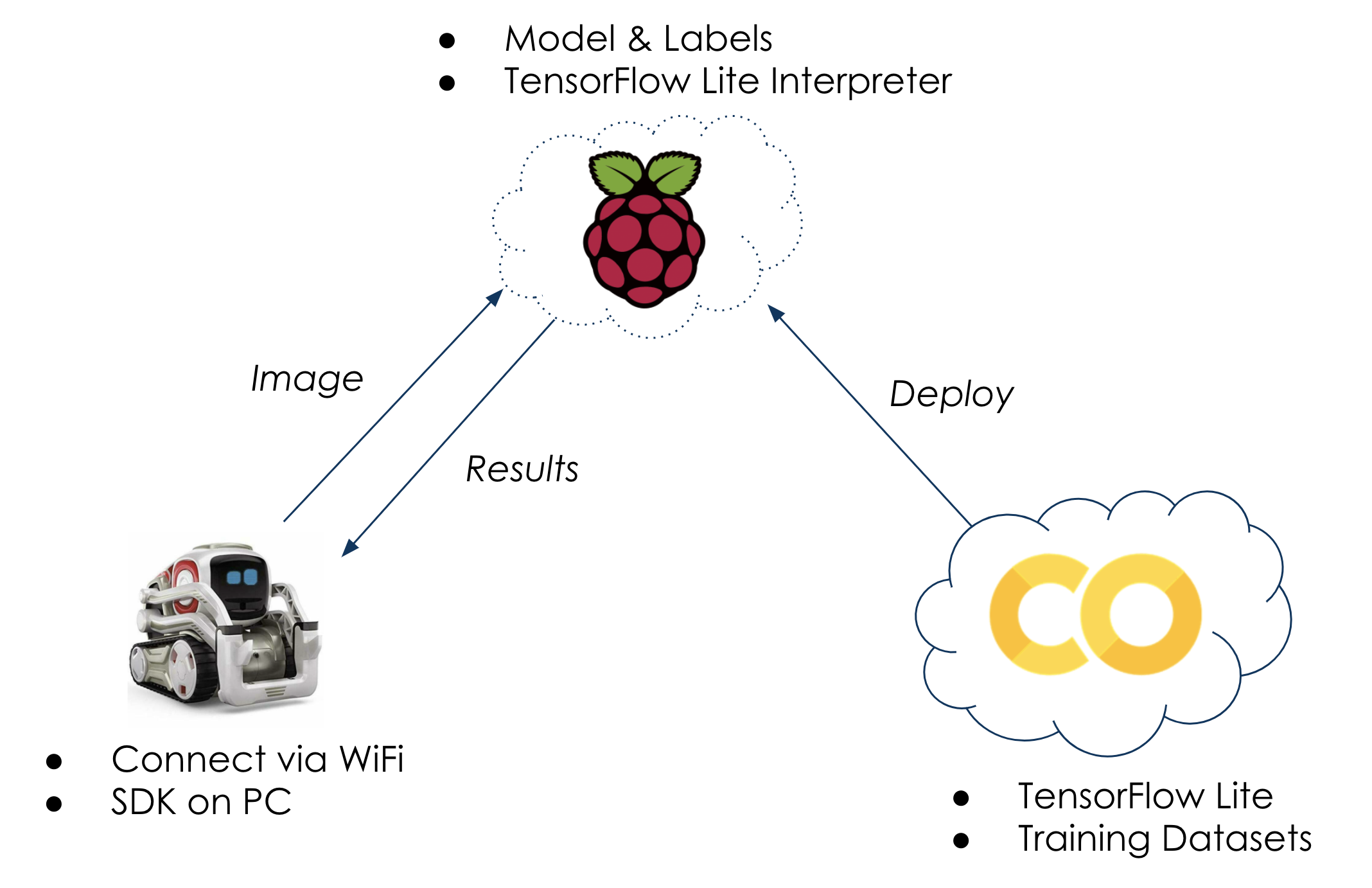This project integrates an Internet of Things (IoT) device, an Edge Device and a Cloud computing environment to explore machine learning at the Edge. Specifically, the project introduces a system that uses a robot’s camera feed and a deep learning model trained in a Cloud environment to perform object classification on a Raspberry Pi. After setting up the infrastructure, the project focuses on evaluating the most optimal deep learning models to deploy at the Edge, analyzing the trade-offs between model size, speed and accuracy to best perform object classification.
Goals
-
Perform on-device machine learning inference on a Raspberry Pi.
-
Minimize latency and optimize the computing resources between an IoT device and a deep learning framework.
-
Discover an optimal image classification model for the Edge, taking into account model size, accuracy and speed.
-
Train an image classification model to recognize the hand gestures “rock, paper, scissors”.
Takeaways
-
Deploying machine learning models to the Edge and performing inference on-device very achievable with TensorFlow Lite.
-
Google’s EfficientNets are more effective than popular convolutional neural networks (MobileNet, ResNet, Inception-v3) at the Edge.
- EfficientNets very compact and use compound scaling to achieve high accuracy while minimizing floating point operations.
-
More work is necessary to increase the model’s “rock, paper, scissors” generalizability.
- Nonetheless, EfficientNet models provide a promising solution to delivering machine learning at the Edge.
